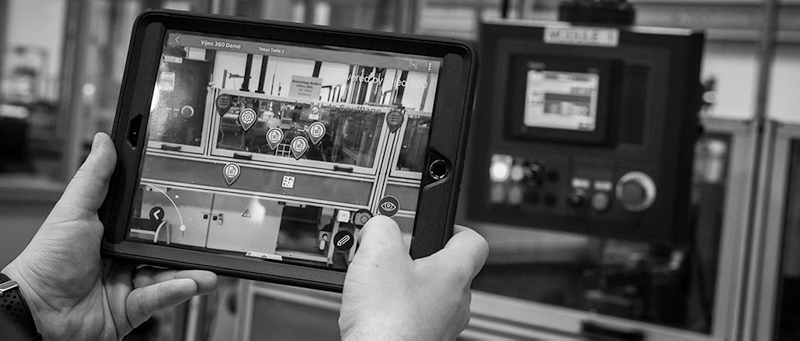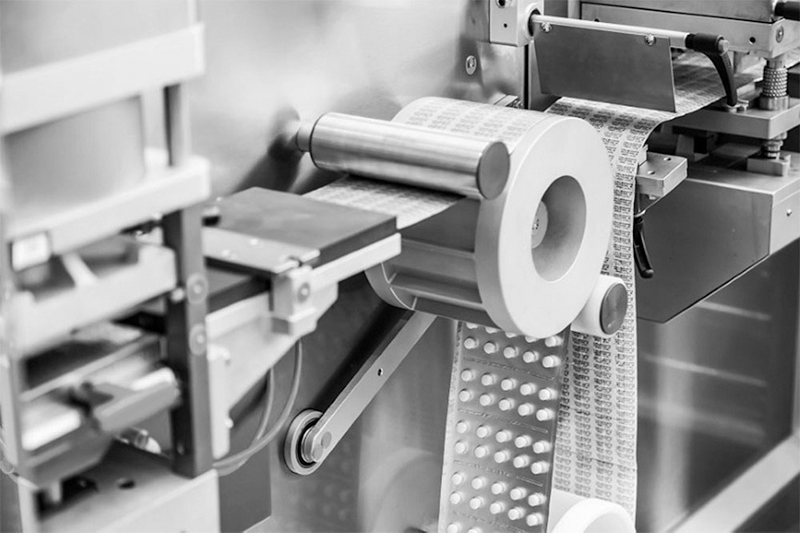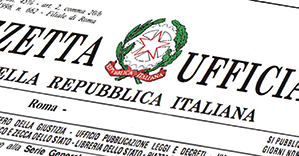Packaging machinery: a limited drop with expected recovery
According to interim balances issued by Ucima’s MECS-Centro Studi, and as widely expected, in 2020 the surge of the Italian automatic machine manufacturers’ sector slowed (-5% overall turnover), but entrepreneurs look to the future with confidence. Matteo Gentili, President of Ucima: «We have a consolidated order portfolio and excellent 4.0 technologies, which will allow us to stay the repercussions of the economic/health crisis».

The surge of Italian packaging machinery manufacturers seemed almost unstoppable: 4 years (from 2016 to 2019) of uninterrupted growth and an increase of almost 50% in turnover in 8 years, from 5.5 to 8.04 billion euros. Then came Covid, and even one of the most dynamic segments, the only one in the Italian capital goods sector to have registered a “plus” sign in 2019, suffered a (albeit modest) slowdown.
In 2020, according to the interim balance drawn up by MECS-Centro Studi di Ucima (Union of Italian Manufacturers of Automatic Packaging Machinery), the total turnover of the sector stood at 7.6 billion euros, down 5% compared to the result registered in 2019 (8.04 billion; +2.2%).
The figure is certainly not surprising, in the light of the annus horribilis that has just ended: the health emergency in fact brought with it a global and generalized slowdown in the economy. The positive performances of some important client sectors (such as Food & Beverage, Pharma, Home & Personal Care) have therefore only mitigated the year-end result.

«We expected this slowdown - commented Matteo Gentili, Ucima president, during the press conference on December 15 - but our sector remains strong and confidently looks to the future. The Covid emergency did not catch us unawares and, after the initial shock of the first few weeks of the pandemic, we made the most of our investments in innovation, demonstrating our strength even in difficult times».
In Italy the Italian packaging machinery manufacturers’ sector dropped 6.8% for an absolute value of €1,574 million (€1.69 billion in 2019), while exports, the sector’s historic strength, contributed a total of €6,065 million, down 4.5% from the previous year.
«Compared to the forecasts at the beginning of the year and the consequences of the pandemic - explained Gentili - we can though declare ourselves satisfied. Thanks also to the efforts of Maurizio Marchesini, vice-president of Confindustria and an outstanding entrepreneur in our sector, we have been included in the Ateco list, and this has allowed us to continue working with continuity and profitability. In addition, the propensity of our companies to invest in digitalization has played in our favor, allowing us to assist customers remotely both in systems testing and in their maintenance».

Exports in the first 9 months: who is rising and who is falling
The export values from January to September 2020 (processing of ISTAT data) frame a downward scenario (-8.7% the tendential variation of exports, which stand at a value of over 3.5 billion euros). A combination of factors weighed heavily, such as economic uncertainties and global health problems which the sector has had to deal with.
The European Union is confirmed in first place among destination areas for Italian exports, with a 41.4% share of the total and a drop in percent of 5.2%, followed by Asia (19.1% of the total, -18.4% compared to 2019) and North America, which remains stable (14%, -1% on 2019). Exports to Africa and Oceania (-16.2%), Non-EU Europe (-9.7%) and Central-South America (-2.6%) also fell.
At the level of individual markets, the United States is first among Italian export destinations in the sector, with a share of 12.7% but with a 1.6% contraction compared to the same period in 2019. France is in second place (-19.2%) Germany is third (-12.2%), overtaking China (-6.4%).
On the other hand, compared to the same period in 2019, some markets have instead intensified their demand for Italian technology, registering more than positive performances. In fact, Spain (+5.5%) gains ground at 191 million euros along with Poland (+1.2% at 127 billion). Sweden grew at double speed (12.1%; 86.8 million euros), as did Switzerland (up 28.6% at 82.5 million euros). The Netherlands trailed with 58.6 million (+5.6%). Overseas, Brazil performed well (up 7%; 80 million euros), while Indonesia jumped to 70 million euros, posting a 49.5% increase. Canada has also accelerated, reaching 47.4 million (up 5.2%).
Forecasts for 2021
The outlook for the current year remains permeated by great uncertainty. «We are counting on returning to growth - anticipated Gentili - but caution is needed. We are aware that the competition is fierce and that, due to the pandemic, many markets are still characterized by instability. However, we are confident, because our companies have consolidated order portfolios that allow us to look at the year with a fair degree of peace of mind compared to other sectors».
Particular emphasis was given by Gentili and Marchesini to the important critical mass that the three Associations (Acimac, Ucima and Amaplast) have created together to address the many problems of the unfavorable economic situation, with benefits for member companies.
«A strong model of associationism and an example for the entire confindustrial world - commented the number two of Viale Dell’Astronomia - which I hope will soon grow with the entry of other associations».
With a view to the growth and development of the sector, the Ucima president believes it is necessary to continue to invest. «In this critical moment - he explained - there is only one possible direction: to go forwards».
 TRANSITION 4.0 PLAN: MEASURES AND RESOURCES FOR COMPANIES
TRANSITION 4.0 PLAN: MEASURES AND RESOURCES FOR COMPANIES
For the revival of the sector, Ucima favorably judges the launch of the National 4.0.Transition Plan, already approved within the Italian Budget Law 2021 (Law 30 December 2020 n, 178) with extension until 2022.
«Even if it is not exactly as we would have liked, it is an essential plan to continue the path of digital integration of our companies», Maurizio Marchesini commented in this regard. «We would need a longer time frame than the one established in the budget law but, considering that many of the resources allocated to this Plan will come from the Recovery Fund, we are counting on a longer horizon».
The National Transition 4.0 Plan extends and relaunches the Industry 4.0 Plan with an investment by the Italian government of around 24 billion euros. The measure, aimed at stimulating private investment and providing stability to companies, sees the enhancement of all deduction rates and an important postponement of deadlines.
There are three measures that the 4.0 Transition Plan is going to strengthen, bringing them closer to Italian manufacturing concerns.
Investments in 4.0 Capital Goods. For investments in 4.0 tangible and intangible assets, incurred from November 16, 2020 to December 31, 2021, the tax credit is up to 50% of the purchase cost of the goods, with payment of at least 20% by the end of 2021 and the possibility of closure by June 30, 2022, while for non 4.0 capital goods the rate increases from 6% to 10%.
In 2022, however, the incentive rates have been lowered again, the tax credit for non 4.0 tangible and intangible capital goods is back to 6%, while for tangible 4.0 capital goods it is set at a maximum of 40% of the cost.
Investments in research, development and technological innovation. The tax credit for R&D projects goes from 12% to 20% with an increase in the maximum amount of the benefit up to 4 million euros.
There are also changes for projects in Digital and Green Technological Innovation, with a tax credit that goes from 10% to 15% with a maximum amount of the benefit due up to 2 million euros.
The tax credit for Technological Innovation and Design also increases from 6% to 10% with a maximum benefit of 2 million euros.
4.0 Training Tax Credit. 4.0 Training tax credit has also been extended to 2022, with an expansion of eligible costs related to consulting services connected to the training project, personnel expenditure covering trainers per hours of training participation, operating costs covering trainers and training participants, as well as indirect overheads (administrative expenses, rent, overheads) for the training period..





















